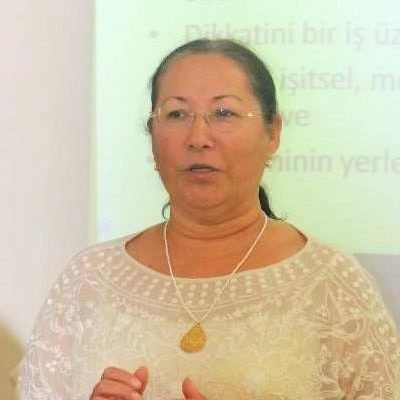
Ümran Korkmazlar
After her undergraduate education, Ümran Korkmazlar completed her graduate programs at Boğaziçi University in the category of “Guidance and Psychological Counseling” and at the Istanbul University Institute of Child Health, in the field of “Developmental Neurology”. She completed her doctorate degree at Istanbul University Institute of Health Sciences. Her thesis is on “Special Learning Disorder and Diagnostic Methods in Primary School Children 6-11 years of age” and with this study, she won the Turkish Psychiatric Society Mualla Öztürk Research Award.
Korkmazlar, Associate Professor in Istanbul Faculty of Medicine (Çapa) Department of Child Mental Health and Diseases in 1998, became a professor in 2004, retired from this department, contributed to the establishment of the Psychology Department of Science University, Head of Department and Dean of the Faculty of Arts and Sciences; she served as the Head of the Department of Psychology at Beykent University between September 2008 and September 2009, and has left these positions voluntarily.
Various studies have been published in the fields of Child-adolescent mental health, Developmental Neurology, Learning disability, Special education, Family therapy, Adolescent psychology, Post-disaster crisis intervention, Trauma therapy, EMDR therapy in Turkey and abroad. Since 2000, she is the representative of European Child & Adolescent EMDR Committee in Turkey. Dr. Korkmazlar is co-founder of Türkiye Association, the president of Child & Adolescent Committee and also one of the founders of Egeden Child Trauma Foundation.
TRAUMA AND EMDR IN CHILDREN
EMDR therapy is a psychotherapy method developed by Francine Shapiro in 1989. EMDR therapy is based on the Adaptive Information Processing (AIP) model, which assumes that humans have an integrative neurological structure to absorb new information, deliver it to a harmonized solution, and store it. If the level of arousal is traumatic for the individual, AIP functioning is inhibited. Instead, that event is stored with all the negative sensations and perceptions at the time it happened. In this case, the individual cannot use his/her coping skills and cannot make a healthy sense of the events he/she experiences. Thus, memories related to the traumatic event are stored inappropriately in the mind and lead to dysfunctional responses. With EMDR, the therapist applies a standard protocol to desensitize the client to the traumatic memory, using bidirectional and rhythmic stimulation to resolve the trauma.
Since children are not “little” adults, it has been observed that basic EMDR training and the standard/adult protocol are not sufficient to work with children and adolescents, and the protocol has been modified by various experts according to the developmental characteristics of the children, adhering to the steps of the standard EMDR protocol. Robert Tinker was the first to apply EMDR with children. Tinker applied EMDR to traumatized children in the USA, and based on her experiences and practices, she wrote the first EMDR book with children, “From the Eyes of a Child: EMDR with Children” with Sandra Wilson in 1999. Tinker gave the first EMDR training with the children on October 26-27, 2000 in London. Korkmazlar had the chance to attend this first child & adolescent EMDR training in Europe. Thus, she became the first specialist to apply EMDR therapy with children and adolescents in our country.
Children and adolescents are in the process of physiological, neurological, cognitive, emotional, and social development since they are not yet fully mature. For these reasons, both the way they present the problem and the intervention methods to solve the problems are different from those of adults. In this presentation, how EMDR therapy is used with children and adolescents will be discussed through case studies.
